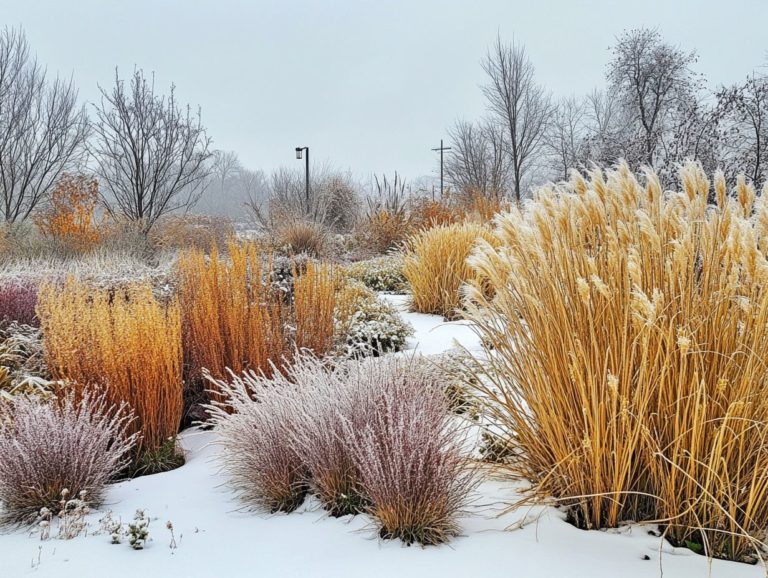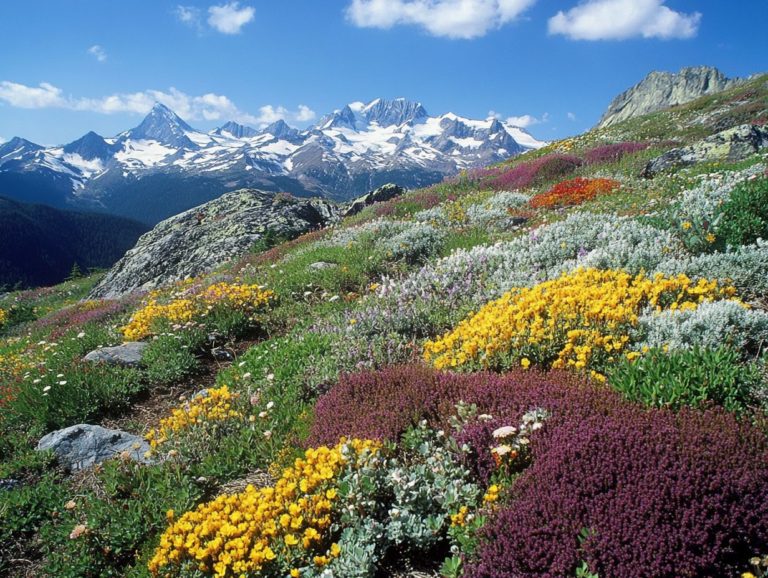Selecting Fruits for Cold-Climate Harvests
Harvesting fruits in cold climates brings its own set of unique challenges and opportunities that can be both intriguing and rewarding. Understanding what defines a cold-climate harvest is crucial for any gardener or farmer aiming to flourish in less-than-ideal conditions.
This exploration delves into the key factors you should consider when selecting fruits, such as climate adaptability and hardiness. You ll discover resilient varieties that thrive even in the chill, alongside best practices for successfully growing and harvesting them.
Alternative methods like greenhouse cultivation and hydroponics can greatly increase your fruit yields in cold climates. Additionally, this guide will ensure that you can achieve fruitful results regardless of the cold.
Contents
- Key Takeaways:
- Understanding Cold-Climate Harvests
- Factors to Consider when Selecting Fruits
- Must-Have Fruits for Thriving in Cold Climates!
- Explore Exciting Alternative Options for Cold-Climate Harvests!
- Frequently Asked Questions
- What should I look for when choosing fruits for cold climates?
- Which fruits thrive in cold climates?
- What are the best ways to protect fruits during cold harvests?
- Can I grow tropical fruits in a cold-climate area?
- How can I extend the growing season for fruits in cold areas?
- What are some cold-hardy fruit tree varieties I can plant?
Key Takeaways:
- Consider climate and growing conditions when selecting fruits for cold-climate harvests.
- Choose hardy and resilient fruit varieties for successful cold-climate harvests.
- Explore alternative options such as greenhouse or hydroponic systems for growing fruits in colder climates.
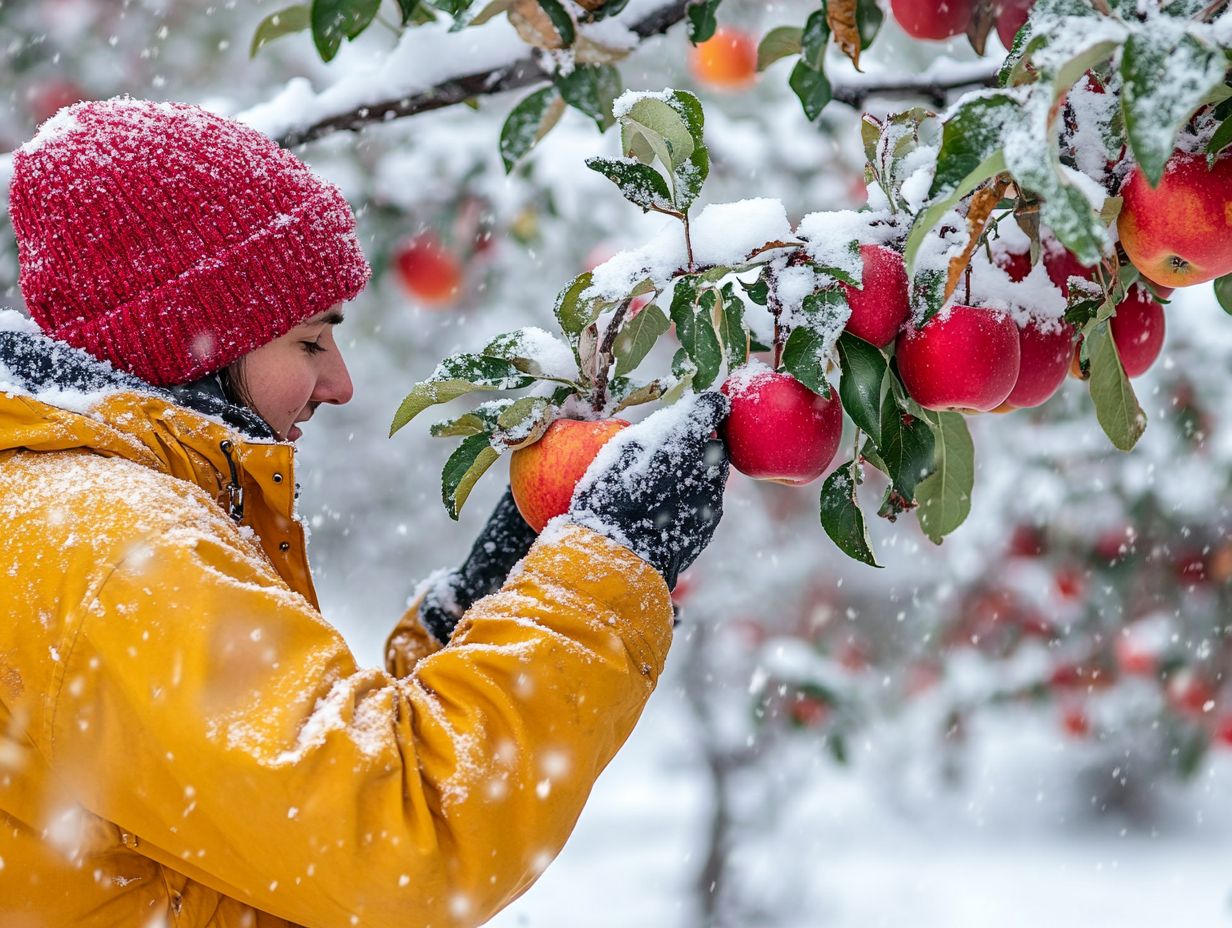
Understanding Cold-Climate Harvests
Understanding cold-climate harvests is crucial for you as a gardener or farmer aiming to maximize your yield during the winter months. It involves identifying which winter vegetables and fruits thrive in colder conditions and understanding plant selection for cold-climate design tailored to the unique challenges of such climates.
Cold-hardy plants often take center stage in this seasonal produce lineup. They allow you to enjoy a steady supply of fresh fruits and vegetables even when temperatures dip.
By equipping yourself with knowledge about these crops, you can transform winter from a barren season into a productive and sustainable opportunity for growth, provided you re ready to adapt your strategies.
What is a Cold-Climate Harvest?
A cold-climate harvest pertains to the cultivation and gathering of crops specifically tailored to flourish in lower temperatures, encompassing a range of winter vegetables and fruits.
These harvests hold significant value, enabling you as a farmer or home gardener to optimize your yield throughout the year, even in regions beset by harsh winters. For example, winter squash not only delivers essential nutrients but also stores remarkably well, serving as a dependable food source.
Imagine planting aromatic bulbs like garlic and onions in the fall for a delightful early summer harvest. Cruciferous vegetables such as kale and Brussels sprouts are also superb options, as their flavor sweetens after a frost.
The adaptability of these crops underscores the resilience inherent in cold-climate farming, facilitating a diverse and sustainable food supply even amidst challenging conditions.
Factors to Consider when Selecting Fruits
When you embark on the journey of selecting fruits for cultivation in colder climates, it s essential to weigh several critical factors.
Consider the climate and growing conditions, as well as the hardiness and adaptability of the plants. These elements are vital to ensuring a successful and bountiful harvest.
Climate and Growing Conditions
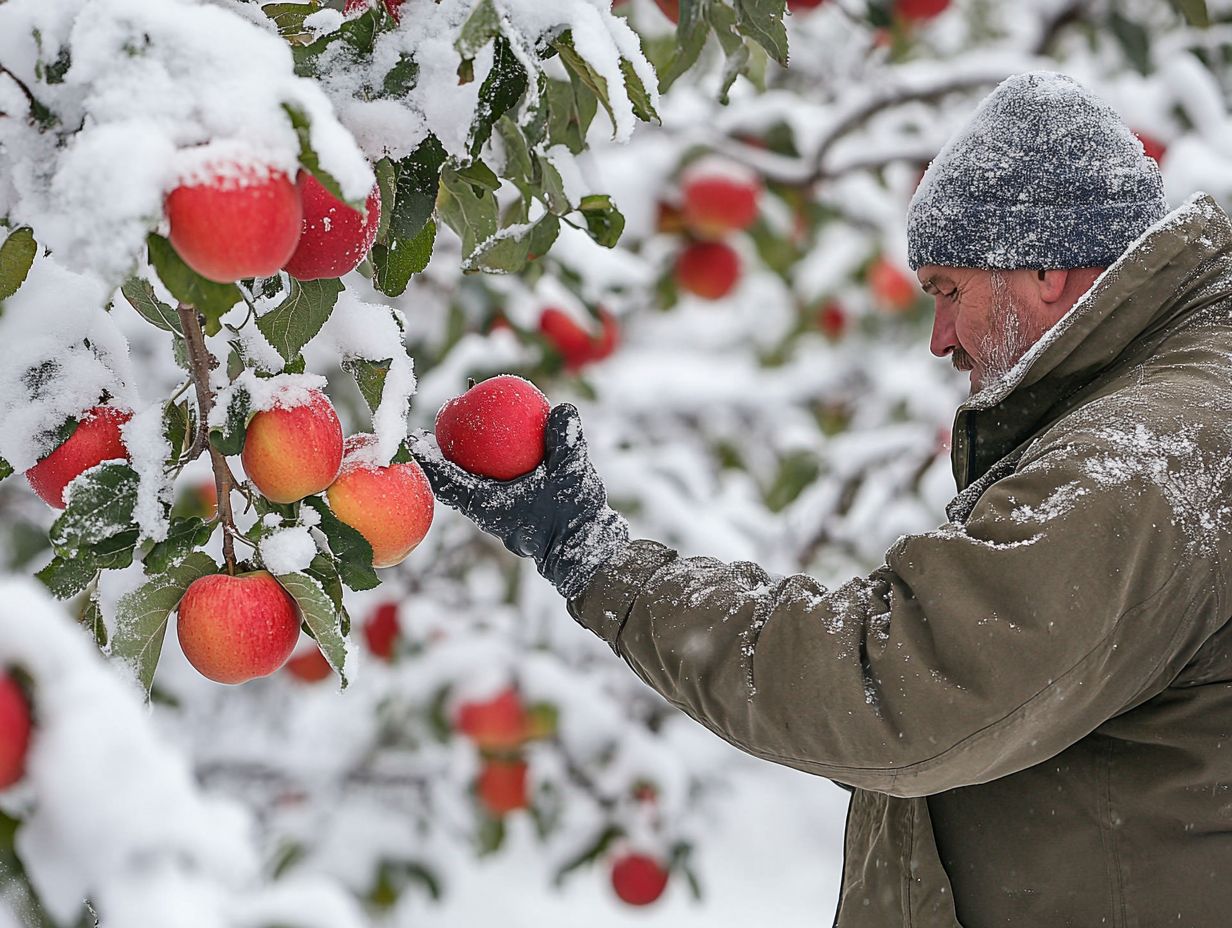
The climate and growing conditions significantly influence which fruits you can successfully cultivate, especially when selecting those cold-hardy plants that can brave the harshest winters.
Different climate zones, ranging from temperate to subtropical, greatly affect the variety of fruits available to you as a grower. For example, apples thrive in cooler climates that offer plenty of cold hours, which are essential for their development and rich flavor profiles. In contrast, avocados prefer warmer regions and need specific temperature ranges to yield fruit with that delightful, buttery texture.
By understanding these regional climatic nuances, you can choose the most suitable varieties, boosting your agricultural yield and ensuring consumers savor fresh, seasonal produce. As climate fluctuations become more pronounced, it s vital for you to adapt your selections to match the evolving environment, ultimately benefiting both your operations and the broader agricultural landscape.
Hardiness and Adaptability
Hardiness and adaptability are essential qualities to consider when selecting fruits. These traits significantly impact a plant’s ability to thrive in cold conditions and resist diseases.
Understanding hardiness ratings can greatly influence your gardening success, especially in regions with harsh winters. For example, varieties like ‘Northblue’ blueberries and ‘Montmorency’ cherries are excellent choices. They are self-pollinating and exhibit remarkable cold hardiness, making them ideal for northern climates.
These fruits offer the added benefit of enhanced disease resistance, which is crucial if you want to reduce chemical treatments while ensuring abundant harvests. By choosing plants suited to your environment, you can enjoy robust yields and healthier crops, fostering a more sustainable gardening practice.
Must-Have Fruits for Thriving in Cold Climates!
Several fruits stand out as exceptional choices for cold-climate harvests. For more details on these, you can explore what are the best cold-climate fruits to grow. Their hardy and resilient varieties thrive in lower temperatures, providing valuable seasonal produce.
Hardy and Resilient Varieties
Hardy fruit varieties, including specific types of apples, are vital for successful cold-climate harvests. They ensure a bountiful yield, even in challenging conditions.
Consider the Honeycrisp and Northern Spy apples. These fruits flourish in frigid temperatures and short growing seasons, showcasing impressive adaptability. Their natural resilience allows you to enjoy rich flavors and crisp textures, even in harsh winters.
Cultivating these fruits enhances biodiversity, creating essential habitats for local wildlife. Many hardy fruits are also nutrient-dense, making them a valuable addition to your diet. By selecting varieties suited to your climate, you can achieve sustainability and enjoy fruitful harvests year after year.
Best Practices for Growing and Harvesting
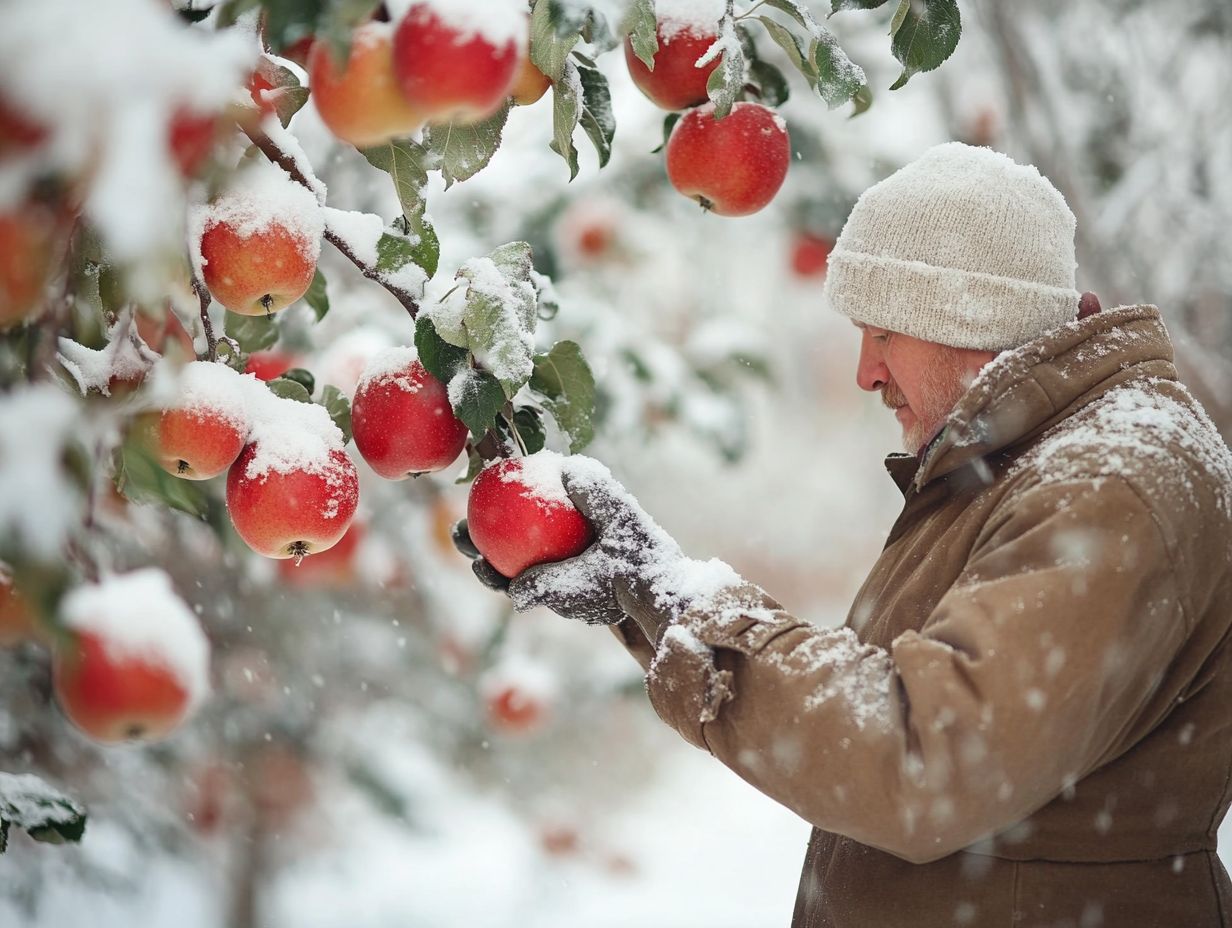
Implementing best practices for growing and harvesting cold-climate fruits can significantly boost both yield and quality, ensuring you make the most of your seasonal produce.
Address the unique challenges of cooler weather by selecting trees for cold-climate landscaping that thrive even in shorter growing seasons. Proper site selection is crucial; ensure ample sunlight and protection from harsh winds to influence your fruit’s development. Timing is also key—know when to prune and harvest for better flavor and longevity.
After harvesting, use appropriate storage methods, like refrigeration or special storage that keeps fruits fresh for longer, to prolong freshness. Learn the specific needs of each fruit type for optimal care and handling, leading to a more bountiful harvest!
Explore Exciting Alternative Options for Cold-Climate Harvests!
Exploring alternative options for cold-climate harvests can open new avenues for cultivating fruits and vegetables. Embrace innovative methods like greenhouse and indoor growing techniques to maximize your yield and expand your gardening possibilities.
Start your cold-climate gardening journey today!
Greenhouse and Indoor Growing
Greenhouse and indoor growing techniques offer you a brilliant way to cultivate seasonal produce, even in chilly climates. With the ability to control temperature and humidity, you create the perfect environment for healthy plant growth.
By harnessing these innovative spaces, you can significantly extend your growing season. Enjoy fresh vegetables and fruits even when the temperature outside drops. Effective temperature control is essential. Make sure to use heaters or thermally insulated materials to maintain a stable environment.
Meeting appropriate light requirements is key. LED grow lights are a favored option; they provide the necessary spectrum without generating excessive heat. Ideal crops for these settings include sturdy greens like kale and spinach, along with a variety of herbs that flourish in these regulated conditions.
This approach boosts your yields. It also reduces the risk of pest infestations, ensuring a more robust harvest for your efforts.
Hydroponic and Aquaponic Systems
Hydroponic and aquaponic systems present you with groundbreaking approaches to achieving successful cold-climate harvests. They champion sustainable practices that optimize both space and resources.
These sophisticated agricultural techniques leverage water-based solutions enriched with nutrients. This allows you to cultivate a diverse array of fruits and vegetables without the constraints of traditional soil gardening. By embracing the natural symbiosis of aquaponics where fish and plants thrive together you can establish self-sustaining ecosystems that not only yield bountiful harvests but also enhance water efficiency.
As you embark on this innovative journey, keep an eye on temperature control and lighting requirements, especially during the challenging winter months. A solid grasp of nutrient balance and crop selection is vital for maximizing your output in these exceptional environments.
Frequently Asked Questions
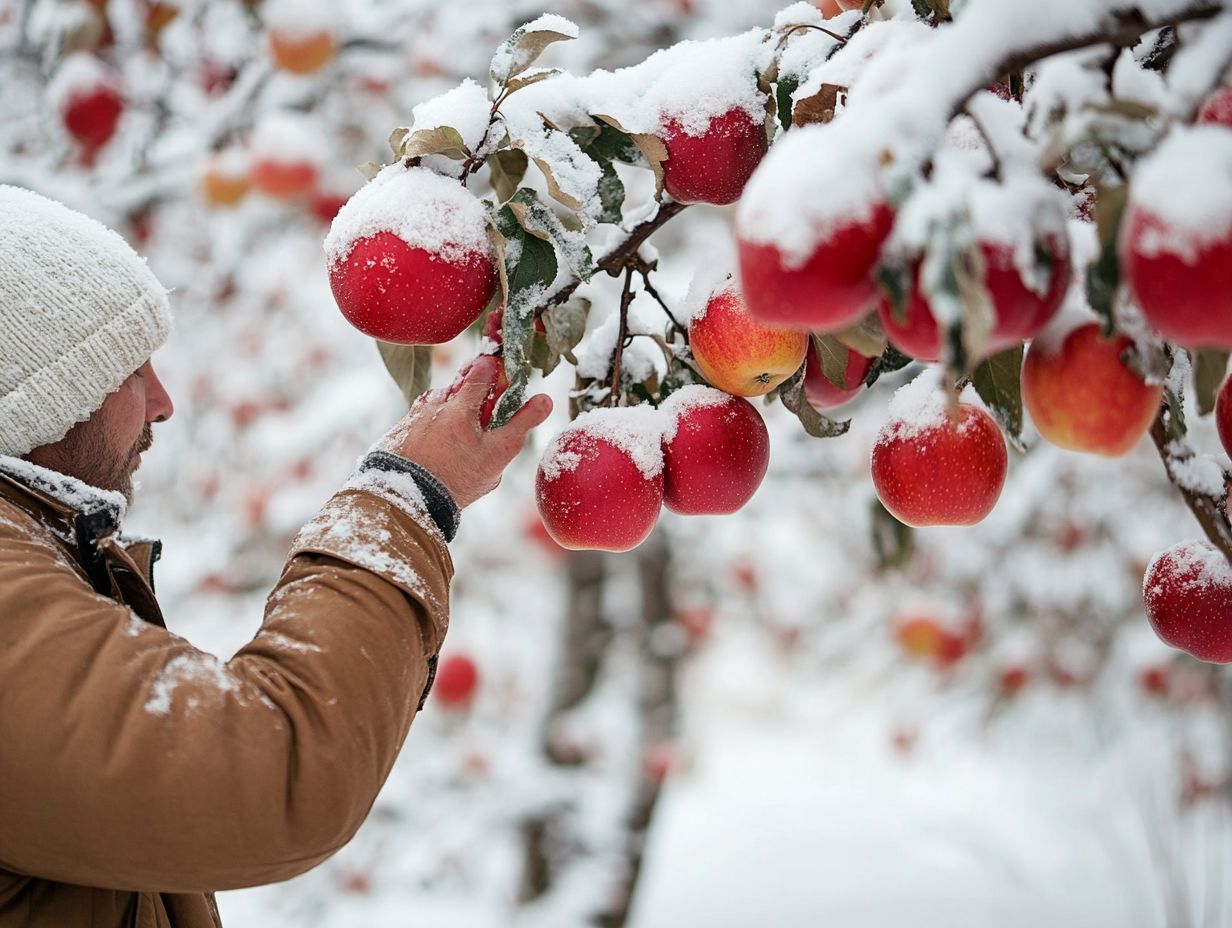
What should I look for when choosing fruits for cold climates?
When selecting fruits for cold-climate harvests, consider the hardiness zone, chilling requirements, and frost tolerance of the fruit varieties. For detailed insights, refer to winter harvesting: what to pick and when. Also, think about the length of the growing season and the potential for early or late frost in your area.
Which fruits thrive in cold climates?
Fruits such as apples, pears, plums, cherries, and hardy berries like currants and gooseberries are well-suited for cold climates. These fruits tolerate colder temperatures and can withstand some frost.
What are the best ways to protect fruits during cold harvests?
To protect fruits during cold-climate harvests, choose hardy and frost-tolerant varieties. For more guidance, consider selecting plants for cold climate community gardens. Provide adequate insulation for the roots, and use protective coverings like row covers or cloches. Don’t wait! Harvest your fruits before the first frost hits to ensure a great yield!
Can I grow tropical fruits in a cold-climate area?
It is not recommended to grow tropical fruits in a cold-climate area. These fruits have a low tolerance for cold temperatures and require a longer growing season. Stick with fruits that are native or well-adapted to your region.
How can I extend the growing season for fruits in cold areas?
You can extend the growing season for fruits in cold areas by utilizing methods like mulching, using protective coverings, and planting in raised beds. These practices help maintain warmer soil temperatures and protect fruits from frost damage.
What are some cold-hardy fruit tree varieties I can plant?
Some cold-hardy fruit tree varieties suitable for cold climates include Honeycrisp apples, Montmorency cherries, Stanley plums, and Bartlett pears. Be sure to research and select varieties best suited for your specific hardiness zone.



